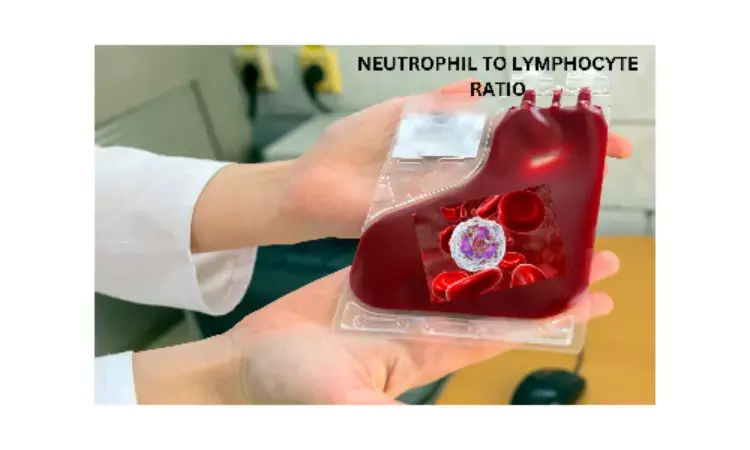- Home
- Medical news & Guidelines
- Anesthesiology
- Cardiology and CTVS
- Critical Care
- Dentistry
- Dermatology
- Diabetes and Endocrinology
- ENT
- Gastroenterology
- Medicine
- Nephrology
- Neurology
- Obstretics-Gynaecology
- Oncology
- Ophthalmology
- Orthopaedics
- Pediatrics-Neonatology
- Psychiatry
- Pulmonology
- Radiology
- Surgery
- Urology
- Laboratory Medicine
- Diet
- Nursing
- Paramedical
- Physiotherapy
- Health news
- Fact Check
- Bone Health Fact Check
- Brain Health Fact Check
- Cancer Related Fact Check
- Child Care Fact Check
- Dental and oral health fact check
- Diabetes and metabolic health fact check
- Diet and Nutrition Fact Check
- Eye and ENT Care Fact Check
- Fitness fact check
- Gut health fact check
- Heart health fact check
- Kidney health fact check
- Medical education fact check
- Men's health fact check
- Respiratory fact check
- Skin and hair care fact check
- Vaccine and Immunization fact check
- Women's health fact check
- AYUSH
- State News
- Andaman and Nicobar Islands
- Andhra Pradesh
- Arunachal Pradesh
- Assam
- Bihar
- Chandigarh
- Chattisgarh
- Dadra and Nagar Haveli
- Daman and Diu
- Delhi
- Goa
- Gujarat
- Haryana
- Himachal Pradesh
- Jammu & Kashmir
- Jharkhand
- Karnataka
- Kerala
- Ladakh
- Lakshadweep
- Madhya Pradesh
- Maharashtra
- Manipur
- Meghalaya
- Mizoram
- Nagaland
- Odisha
- Puducherry
- Punjab
- Rajasthan
- Sikkim
- Tamil Nadu
- Telangana
- Tripura
- Uttar Pradesh
- Uttrakhand
- West Bengal
- Medical Education
- Industry
Neutrophil-to-lymphocyte ratio may predict potential complications among type 2 diabetes patients: Study

India: A recent study published in Cureus has shown the usefulness of neutrophil-to-lymphocyte ratio (NLR) in the management of type 2 diabetes mellitus (T2DM) and in predicting long-term complications.
The researchers revealed the equivalent efficacy of NLR to glycated hemoglobin (HbA1c) in predicting glycemic control. They suggest that since diabetes affects different body organs, NLR evaluation probably predicts inflammation.
Diabetes is a chronic disease that causes blood glucose dysregulation. Type 2 diabetes could result in long-term inflammatory conditions that impact different body organs. Despite the availability of diagnostic markers like HbA1c for T2DM, it is essential to find an appropriate marker that could predict long-term complications.
Against the above background, Qader A. Jalily, Microbiology, Mahavir Institute of Medical Sciences, Vikarabad, India, and colleagues evaluated the potential role of neutrophil-to-lymphocyte ratio in predicting disease progression and treatment responses.
For this purpose, the researchers conducted a case-control study among 160 T2DM patients with 132 non-diabetic persons. Blood samples were collected from each participant and were processed for HbA1c, hemoglobin, ferritin, iron, and complete blood picture (NLR).
The researchers reported the following findings:
- There was a significant variation in the serum levels of ferritin (264.8±611.6 ng/ml versus 168.3±364.7 ng/ml), iron (4.095±8.851 mcg/dl versus 55.20±37.62 mcg/dl), and HbA1c (8.169±1.635% versus 5.668±0.5260%) among T2DM patients compared to non-diabetic persons.
- The NLR values (4.189±4.154 versus 4.095±8.851) among patients with T2DM significantly varied from those of non-diabetic persons.
- There was a significant negative correlation between the serum levels of iron and NLR (r=-0.17), and a positive correlation existed between HbA1c and NLR (r=0.19).
- The serum levels of iron revealed a significant positive correlation with the serum levels of ferritin (r=0.24) and hemoglobin percentage (r=0.41).
- HbA1c revealed a significant positive correlation with NLR (r=0.19).
- There was a significant negative correlation between iron with NLR (r=-0.17) and hemoglobin percentage with NLR (r=-0.30). However, no such correlation was demonstrated among non-diabetic persons.
- With an accuracy of 89.85% and high sensitivity and specificity, NLR showed diagnostic accuracy like HbA1c.
In conclusion, despite the availability of traditional markers like blood glucose and HbA1c to diagnose type 2 diabetes patients, they may be inappropriate to assess the overall health and predict long-term T2D complications.
The study found a significant correlation between HbA1c and NLR among T2DM patients. Moreover, there was a significant variation in NLR between T2DM patients and non-diabetic persons.
"The study results support the role played by the NLR to manage T2DM patients," the researchers wrote.
"Alternatively, a more comprehensive evaluation of patients with type 2 diabetes is possible with NLR estimation. Unlike the traditional biomarkers, NLR could be used to predict potential complications among T2DM patients."
Reference:
Mohammed A, Khaleel M, R. M. P, et al. (February 29, 2024) Neutrophil-to-Lymphocyte Ratio as a Potential Biomarker to Managing Type 2 Diabetes Mellitus and Predicting Disease Progression. Cureus 16(2): e55227. doi:10.7759/cureus.55227
Dr Kamal Kant Kohli-MBBS, DTCD- a chest specialist with more than 30 years of practice and a flair for writing clinical articles, Dr Kamal Kant Kohli joined Medical Dialogues as a Chief Editor of Medical News. Besides writing articles, as an editor, he proofreads and verifies all the medical content published on Medical Dialogues including those coming from journals, studies,medical conferences,guidelines etc. Email: drkohli@medicaldialogues.in. Contact no. 011-43720751


